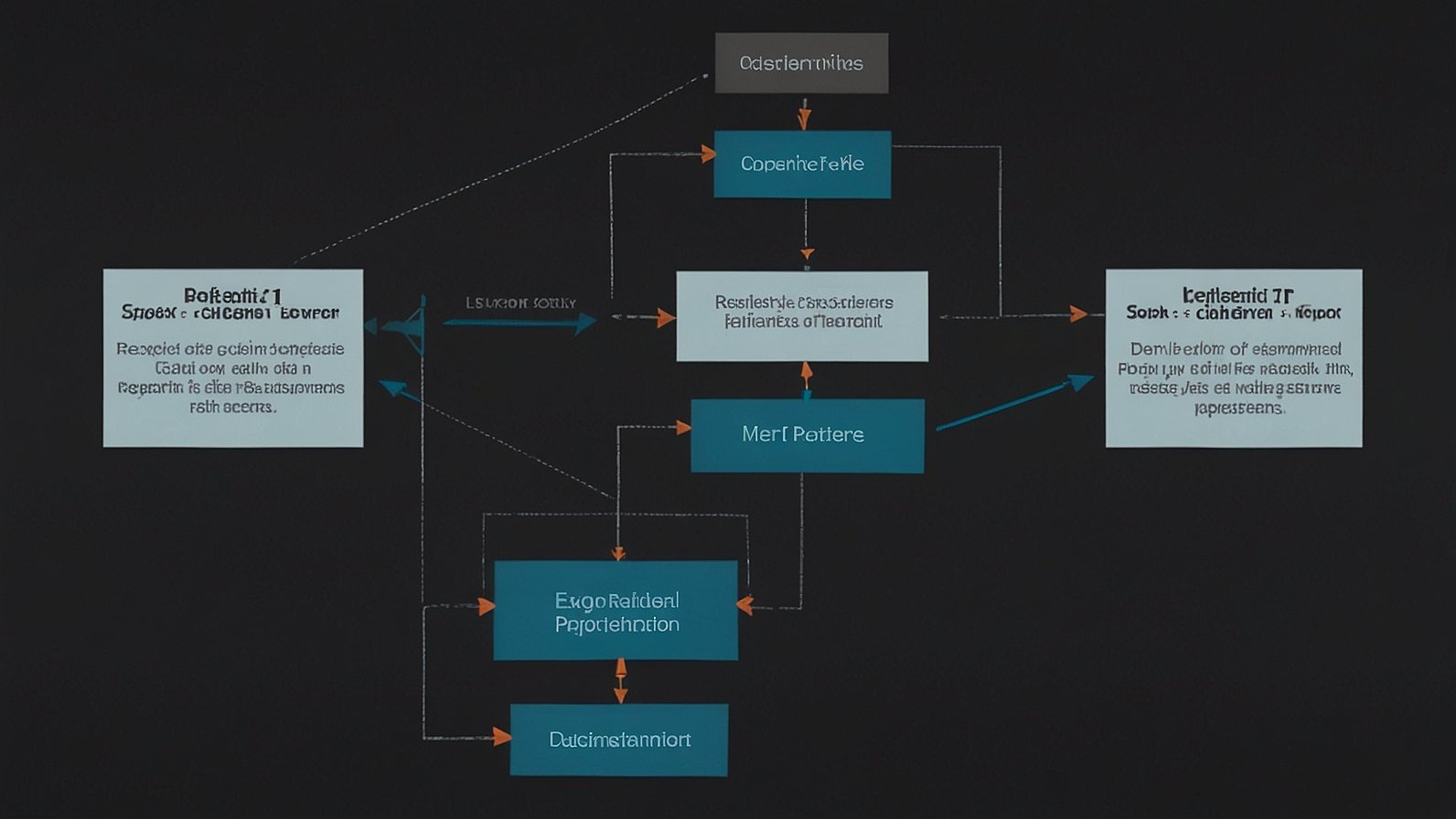Ever had your smooth-running SSIS package suddenly grind to a halt, logging a cryptic “Error 469” that sends you scrambling to search engines? You’re not alone. This common SQL Server Engine error has a knack for popping up right in the middle of a critical data load, often when you’re using a handy BULK INSERT operation.
The good news? The ssis 469 error is very specific and, once you understand its rules, surprisingly easy to fix. Think of it like SQL Server’s way of saying, “Hey, you’re trying to do something powerful with identity columns, but you forgot to give me the full instructions!” Let’s break down exactly what triggers this message and how you can resolve it for good.
What Exactly is the SSIS 469 Error?
In simple terms, Error 469 is a rule enforcement notification from the SQL Server Database Engine. The official message is: “An explicit column list must be specified for the target table when the KEEPIDENTITY table hint is used and the table contains an identity column.”
Let’s translate that from “Database-ese” into plain English.
Imagine you’re moving into a new house. Your identity column is like a dedicated, self-assembling piece of furniture that builds itself (it auto-generates numbers). The KEEPIDENTITY hint is you saying, “No, I brought my own heirloom version of that furniture; use the one I have in this moving truck.”
SQL Server, playing the role of a meticulous foreman, then says, “Okay, but if you’re going to supply your own value for this self-building furniture, I need you to give me a detailed inventory list of every single item you’re moving in. I won’t assume anything.” That detailed inventory list is your explicit column list.
So, the error fires when three things are true:
- Your target table has an identity column.
- You are using a
BULK INSERT,OPENROWSET(BULK...), or a similar bulk operation. - You have used the
KEEPIDENTITYtable hint without explicitly naming every column you’re inserting data into.
Why Does This Error Happen in SSIS?
You might be thinking, “But I didn’t write any T-SQL with KEEPIDENTITY!” This is where SSIS adds a layer of mystery. The ssis 469 error doesn’t always come from code you’ve manually written. More often, it surfaces because of how SSIS components generate T-SQL behind the scenes.
Here are the most common SSIS scenarios that trigger Error 469:
- Using a SQL Command in an OLE DB Source: You’ve written a custom
BULK INSERTorOPENROWSETquery for performance and included theKEEPIDENTITYhint but forgot the column list. - The OLE DB Destination Component: When you configure this component with “Table or view – fast load” and check the “Keep identity” option, SSIS automatically generates a T-SQL statement using
KEEPIDENTITY. If your target table has an identity column and your data flow doesn’t map every column explicitly, the error occurs. - Execute SQL Tasks: Any T-SQL you run inside an Execute SQL Task that performs a bulk load with
KEEPIDENTITYis subject to this same rule.
The error log might point to a specific BULK INSERT statement or an SSIS data flow task, but the root cause is always the same violation of SQL Server’s rule.
A Real-World Example
Let’s say you have a Customers table with this structure:
sql
CREATE TABLE dbo.Customers (
CustomerID int IDENTITY(1,1) PRIMARY KEY,
FullName nvarchar(100) NOT NULL,
Email nvarchar(255)
);
Your source data file (customers.csv) has its own CustomerID values that you want to preserve. The incorrect T-SQL command that would cause Error 469 is:
sql
BULK INSERT dbo.Customers
FROM 'C:\data\customers.csv'
WITH (
FIELDTERMINATOR = ',',
ROWTERMINATOR = '\n',
KEEPIDENTITY -- We're telling SQL Server to use our source IDs
);
-- ERROR 469! No column list is provided.
SQL Server sees KEEPIDENTITY and an identity column in the table and immediately demands a column list.
How to Fix the SSIS 469 Error: A Step-by-Step Guide
Fixing this error is all about providing the explicit instructions SQL Server is asking for. Here are the primary methods, from the quickest fix to more robust solutions.
Method 1: The Direct T-SQL Fix (Add a Column List)
This is the most straightforward solution if the error is in your own custom SQL command. Simply modify your INSERT or BULK INSERT statement to include the exact columns you are populating.
The Fix in Action:
Using our example above, the corrected code would be:
sql
BULK INSERT dbo.Customers (CustomerID, FullName, Email) -- Explicit column list here
FROM 'C:\data\customers.csv'
WITH (
FIELDTERMINATOR = ',',
ROWTERMINATOR = '\n',
KEEPIDENTITY
);
By adding (CustomerID, FullName, Email), we’ve given SQL Server the detailed inventory it needs. The operation will now succeed, and the source CustomerID values will be inserted directly into the table’s identity column.
Method 2: Fixing the SSIS OLE DB Destination Component
If the error is coming from an SSIS data flow, your fix happens in the package designer.
- Open Your Data Flow: Navigate to the data flow task that is failing.
- Select the OLE DB Destination: Double-click the destination component that is loading into your target table.
- Go to Mappings: In the editor, click on the “Mappings” page on the left.
- Verify All Columns: Ensure that every input column from your source is explicitly mapped to a corresponding destination column. SSIS will often create these mappings automatically, but if they are missing or incorrect, it can trigger the error. The very act of having a complete mapping forces SSIS to generate the proper SQL with an explicit column list.
This method is visual and confirms that your data flow is structured correctly.
Method 3: Using SET IDENTITY_INSERT As an Alternative
Sometimes, using KEEPIDENTITY isn’t mandatory. You can achieve the same result by using SET IDENTITY_INSERT. This approach can be more flexible, especially for individual INSERT statements.
How it Works:
sql
SET IDENTITY_INSERT dbo.Customers ON; -- Allow explicit identity values INSERT INTO dbo.Customers (CustomerID, FullName, Email) -- Column list is still required! VALUES (1001, 'John Doe', 'john.doe@example.com'); SET IDENTITY_INSERT dbo.Customers OFF; -- Turn it back off
Important Note: SET IDENTITY_INSERT is a connection-level setting, so if you’re using it in SSIS, you must execute the ON statement, the INSERT, and the OFF statement within the same Execute SQL Task or the same database connection context. Otherwise, you might leave the setting ON for other operations, which can cause issues.
Proactive Measures: Preventing Error 469 Altogether
An ounce of prevention is worth a pound of cure. Here’s how to stop this error before it starts:
- Adopt a Column List Habit: Always write
INSERTstatements with an explicit column list, even when not required. It makes your code self-documenting, more robust to schema changes (like adding new nullable columns), and prevents this error. - Leverage SSIS Logging: Configure detailed SSIS logging to the
SSISDBcatalog or a custom log table. When an error like 469 occurs, the logs will pinpoint the exact T-SQL command that failed, saving you valuable debugging time. - Code Review Checklist: Add a check for “explicit column lists with bulk operations” to your team’s data integration code review process.
Conclusion: You’ve Mastered Error 469
The ssis 469 error, while initially confusing, is simply a guardrail from SQL Server. It ensures data integrity when you’re performing advanced operations with identity columns. By understanding that it demands an explicit column list whenever you use KEEPIDENTITY on a table with an identity column, you can quickly diagnose and resolve the issue.
Your key takeaways are:
- The Cause: A missing column list in a bulk insert operation using
KEEPIDENTITY. - The SSIS Link: It often appears in logs from the OLE DB Destination or custom SQL tasks.
- The Fix: Always provide an explicit column list in your
INSERT/BULK INSERTstatement or ensure full column mapping in your SSIS data flow.
Now that you’re equipped with this knowledge, that daunting error number will be nothing more than a minor speed bump on your data integration journey.
Have you encountered other puzzling SSIS error codes? What was your “aha!” moment for solving them?
FAQs
I’m not using KEEPIDENTITY, but I still get Error 469. Why?
Check your OLE DB Destination component in SSIS. If you have the “Keep identity” option checked, it is silently using the KEEPIDENTITY hint in the T-SQL it generates. Uncheck it or provide a full column mapping to resolve the issue.
Can I use the KEEPIDENTITY hint without an identity column?
Yes, but there’s no point. If the target table has no identity column, the KEEPIDENTITY hint is ignored by SQL Server and won’t cause an error. It’s only relevant for tables that actually have an identity column.
What’s the difference between KEEPIDENTITY and SET IDENTITY_INSERT?KEEPIDENTITY is a hint specific to bulk operations (BULK INSERT, OPENROWSET(BULK...)). SET IDENTITY_INSERT is a session setting that applies to standard INSERT statements. Both allow explicit values for an identity column, but they are used in different contexts.
Does this error occur with the ADO NET Destination in SSIS?
Typically, no. The KEEPIDENTITY hint is primarily used by the OLE DB provider. The ADO.NET destination uses a different mechanism (e.g., SqlBulkCopy) which has its own options for handling identity columns, like the KeepIdentity property in a SqlBulkCopyOptions enumeration.
Is there a performance impact to using an explicit column list?
Generally, no. The primary performance impact comes from the bulk operation itself. The column list is just a metadata instruction for the query parser and adds negligible overhead.
Will this error occur if I’m using a view as my destination?
It can, if the underlying base table of the view has an identity column and you are using KEEPIDENTITY in a bulk operation against that view. The same rules apply.
How can I find the exact T-SQL query that caused the error in SSIS?
Enable logging for your SSIS package on the “OnError” event. In the log, look for the SourceName (the failing component) and the ErrorMessage field, which will often include the exact T-SQL command that failed.

